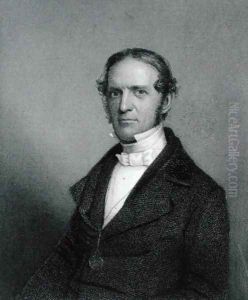Southworth, A.S. and Hawes, J. Paintings
Albert Sands Southworth (1811–1894) and Josiah Johnson Hawes (1808–1901) were an American duo of early photographers who collaborated to create some of the finest daguerreotypes in the United States during the mid-19th century. Their partnership, Southworth & Hawes, lasted from 1843 until 1863 and was based in Boston, Massachusetts. They worked on a variety of subjects, including portraiture, landscapes, and architectural photography.
Albert Sands Southworth, born in West Fairlee, Vermont, was initially trained as a druggist but became fascinated with the emerging technology of photography. Josiah Johnson Hawes, who was born in Wayland, Massachusetts, was an artist and trained as a painter. When Southworth returned from a trip to England, where he studied the daguerreotype process, he met Hawes, and they formed Southworth & Hawes, which became one of the most famous American photographic studios of the 19th century.
Their studio became a cultural hub in Boston, attracting intellectuals, politicians, and celebrities. They were known for their technical and artistic mastery, particularly in the use of lighting and composition to create depth and character in their portraits. The duo used larger plates and a quicker exposure time than was common at the time, resulting in clearer, more detailed images.
The partnership dissolved in 1863, after which Southworth attempted to start a farm but continued practicing photography. Hawes continued to operate the studio until his retirement. Southworth & Hawes's works were exhibited and praised during their careers, and today, their photographs are valuable for their artistic merit and as historical documents of the period. Their daguerreotypes provide a window into the era's cultural, political, and social life and are held in the collections of major institutions such as the Metropolitan Museum of Art and the George Eastman House.
After their partnership ended, Southworth faced financial difficulties and was less active in photography, while Hawes continued to be successful in the field. Southworth died in 1894, and Hawes lived until 1901. Their legacy lives on in the art of photography, and they are remembered as pioneers in the field, setting standards for excellence and pushing the boundaries of the photographic medium in its infancy.
